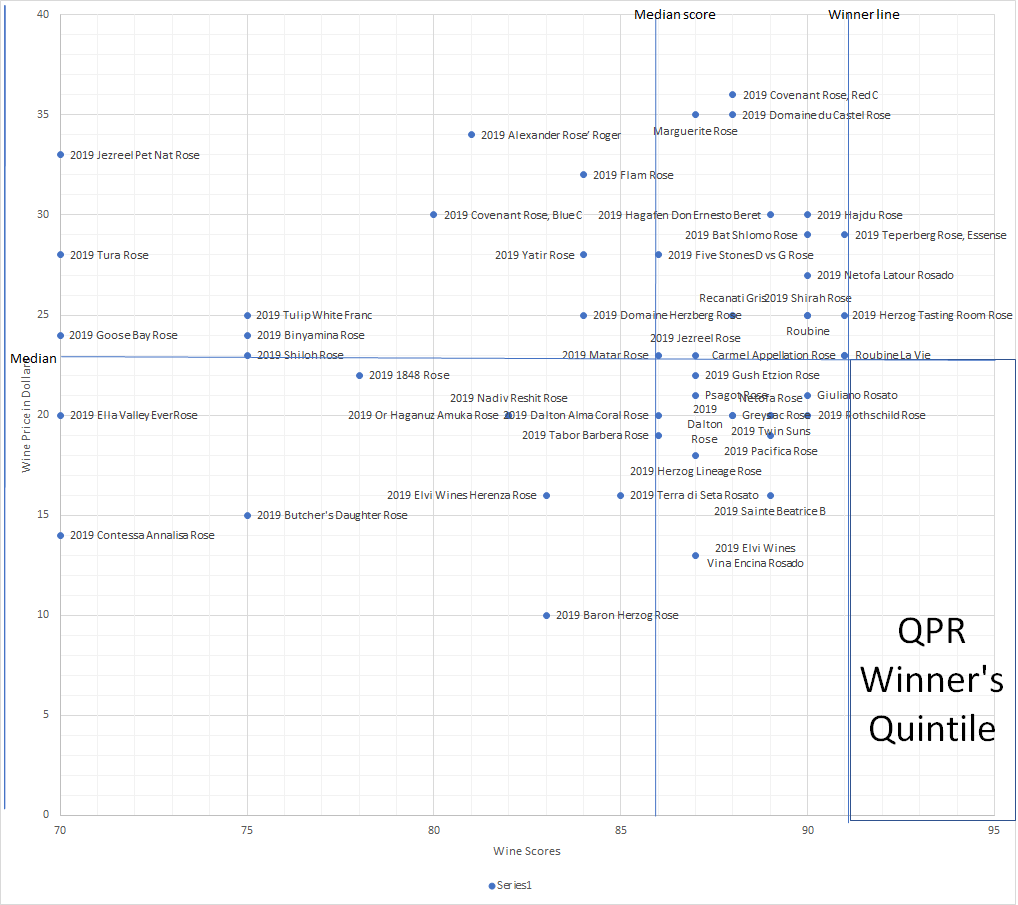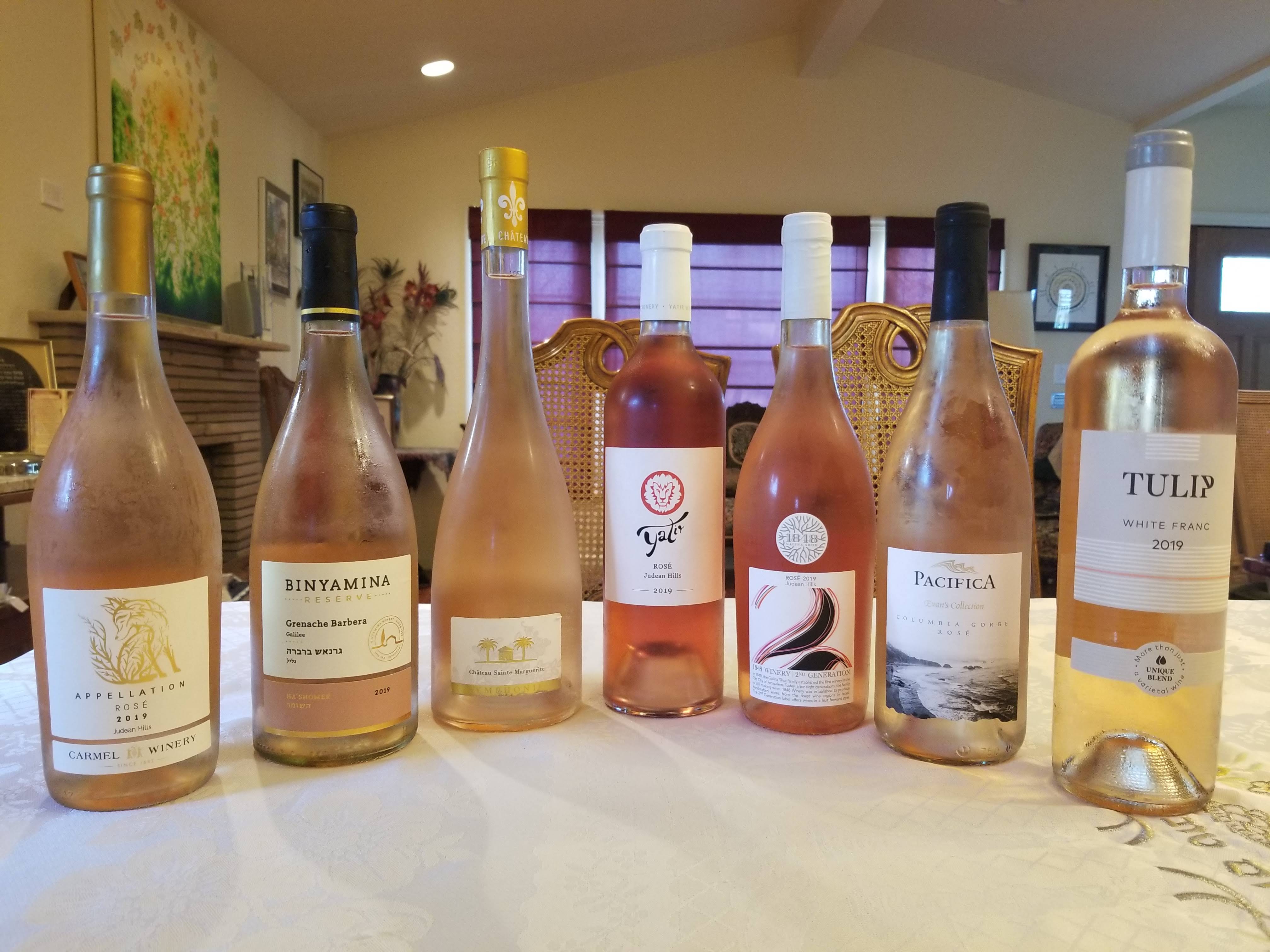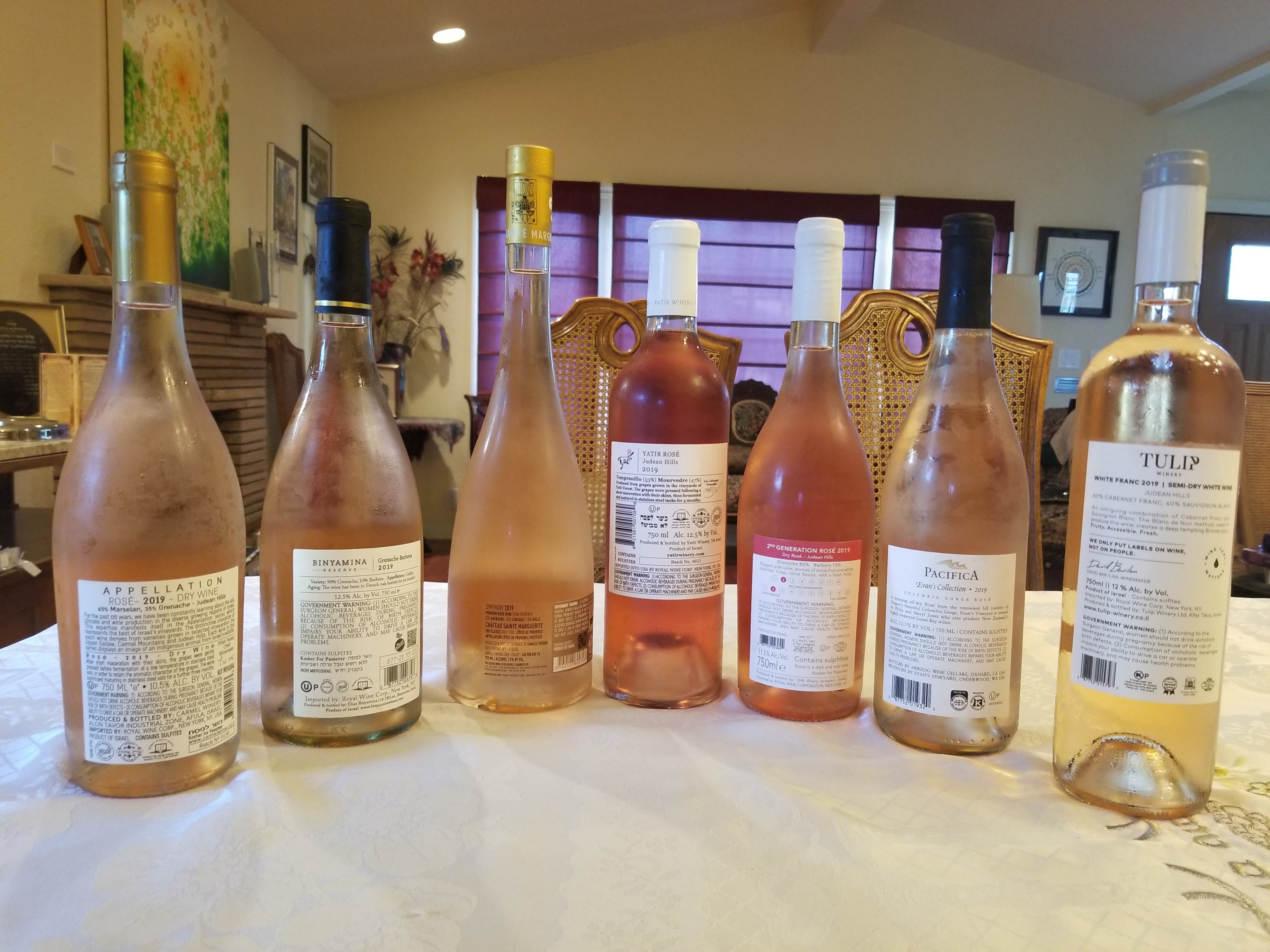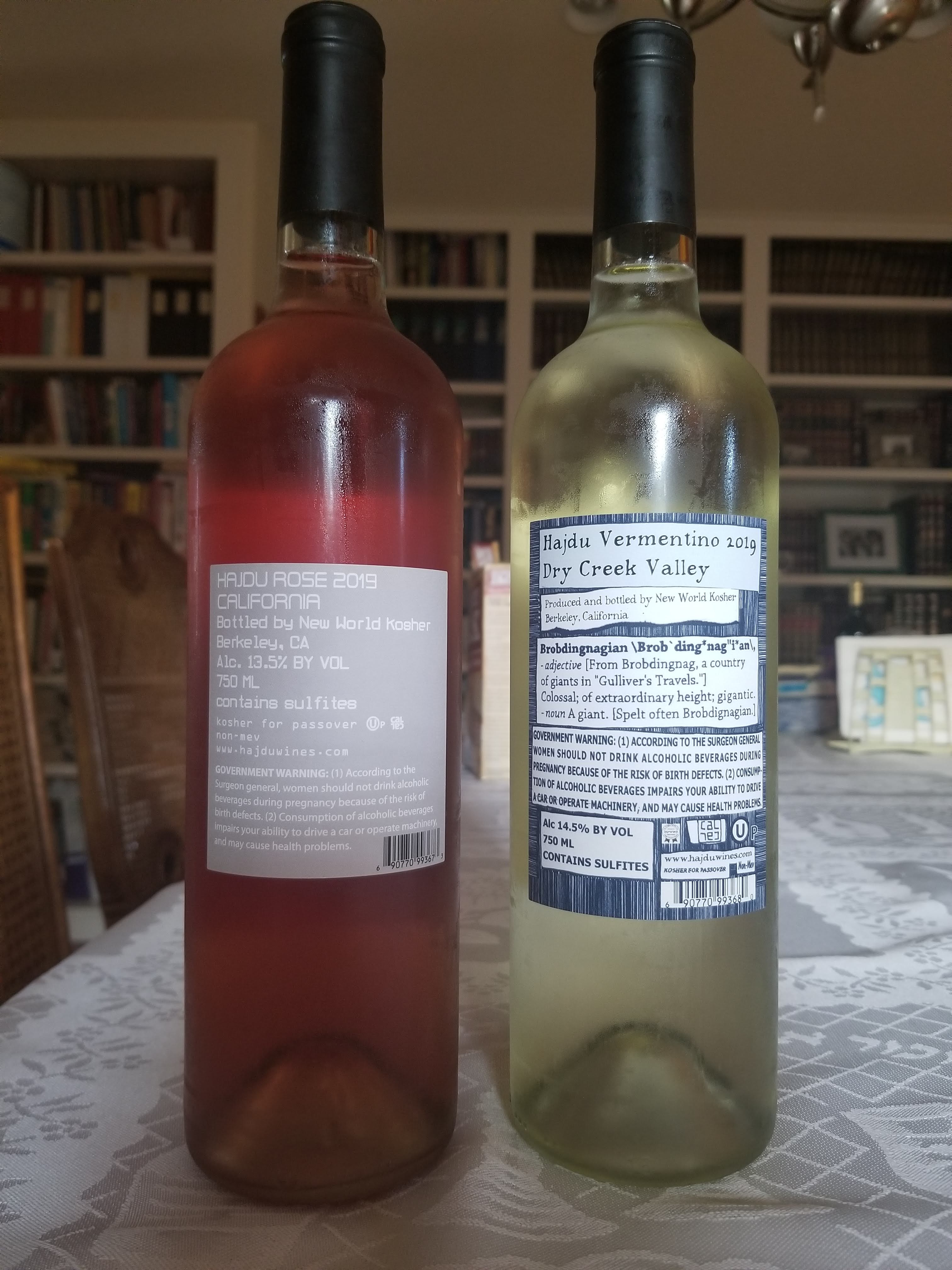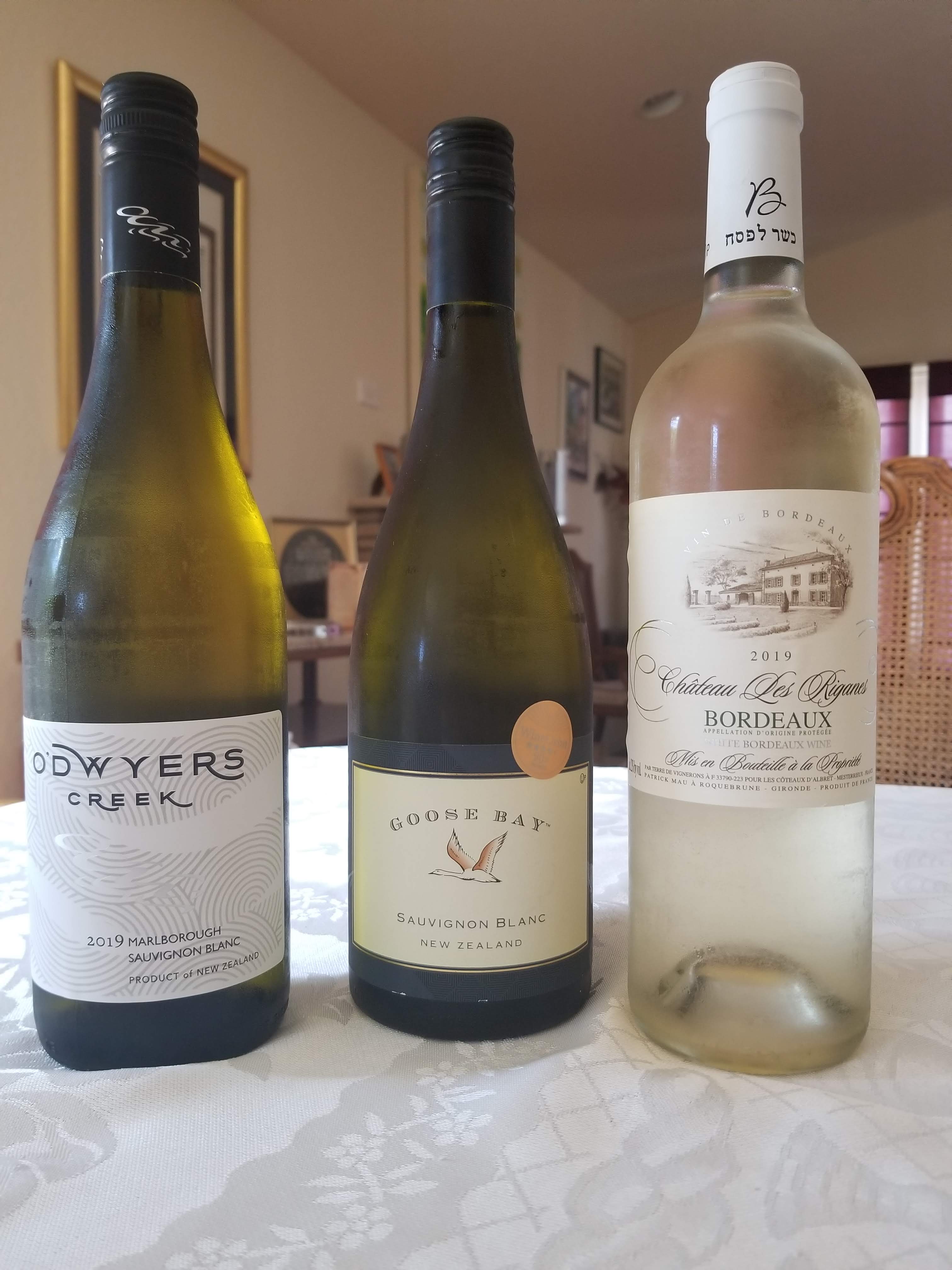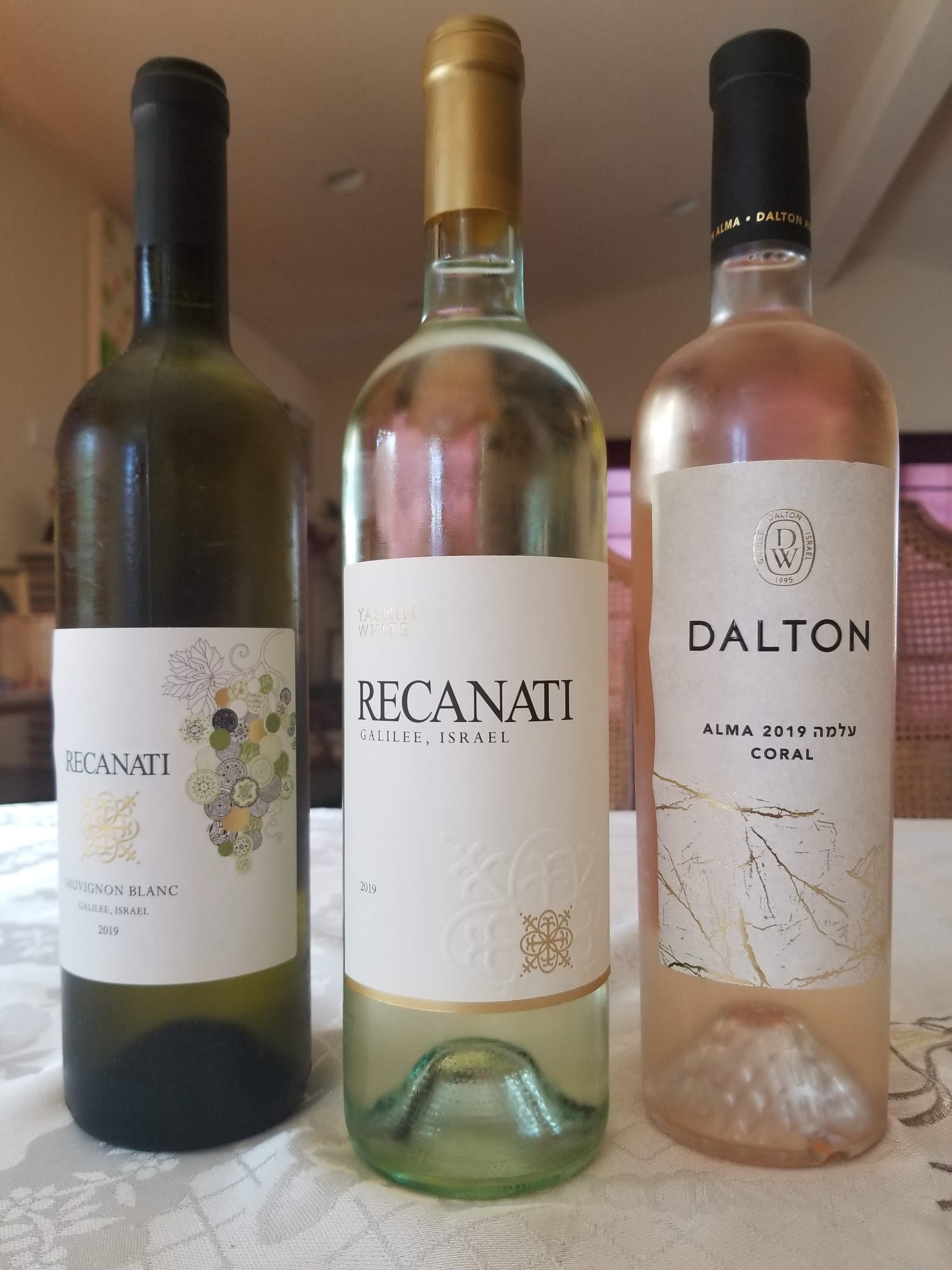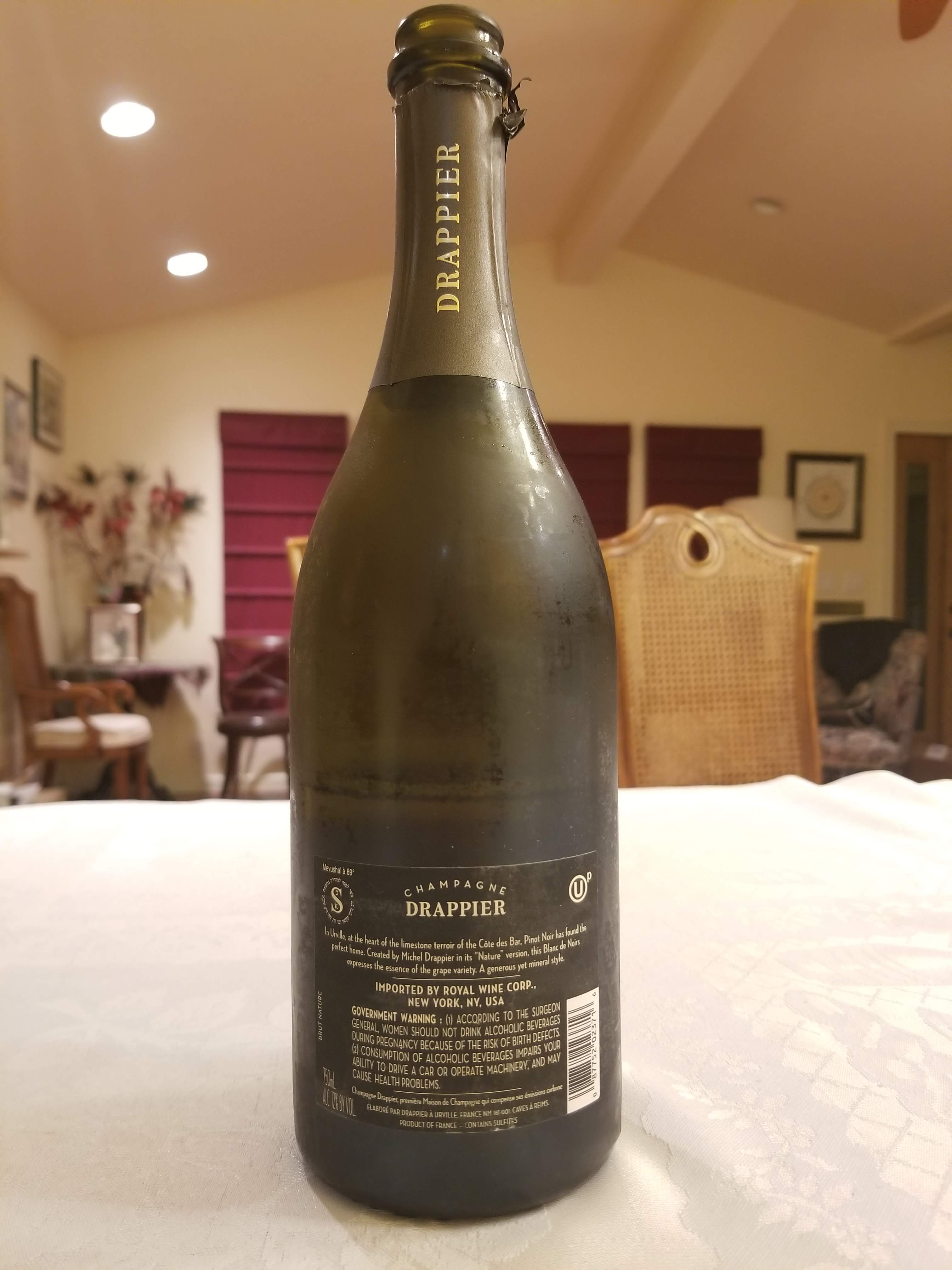Blog Archives
My latest round of both new and old winners and some more losers for 2019
After my long hiatus, I am happy to say that this post brings me current to wines I want folks to know about, both good and bad. Thankfully for you, it does not include at least 45 roses, white, and red wines that were so horrible that I see no value in posting their NA scores here.
However, two wines that need warning are the 2017 Chateau Lacaussade Saint-Martin
and any wine from Capcanes Cellars made from 2015 and on, other than the 2015 Capcanes Pinot Noir and the lovely 2015 Capcanes Samso Carignan. To me, this is truly sad Capcanes was a rockstar and a perennial goto and QPR wine, other than there roses. Now, they have soldout to Parker’s view of wine and I cannot fathom for even a second what they gain from this. Their wines sold perfectly well so sales cannot be the reason. Yes, there is a new winemaker, Anna Rovira, who recently won the prestigious female winemaker of the year for the 2019 award from Selection magazine! Congratulations! She replaced the longtime winemaker of Capcanes Angel Teixidó. Sadly, from my perspective, the wines are far riper than they used to be, they also show less acid and less balance. They are wines that I no longer buy, the last Capcanes I bought was from the 2014 vintage. With that said, I hope this shift is a byproduct of some rough years and that the 2017 vintage will return to its old self, one can always hope!
On another aside, please folks – STOP drinking 2017 whites and 2018 roses – they are dead! I have had loads of 2018 roses recently, they are dead or on the way down from jumping off the cliff. Sure, there are whites that are still young from the 2017 vintage, like full-bodied Chardonnays or white Bordeaux, other than Lacussade. Sadly, many of the 2018 whites are on their way down as well. The 2018 Tabor Sauvignon Blanc is already losing its acid and so many others as well. Please be careful, taste before stocking up. The simple whites are like roses, drink them by fall.
On the good news side, the 2017 vintage from Bordeaux is so far so good! The much scorned 2017 vintage from Bordeaux so far is holding up very well. I really liked the 2017 Chateau Mayne Gouyon, which is simple and mevushal, and very tasty. The 2017 Chateau Moulin Riche was lovely, maybe even better than the 2016 vintage. I hear the 2017 Chateau Le Crock and the 2017 Chateau Royaumont are also showing very well, all-around great news for the much pooh-poohed 2017 vintage.
Finally, bravo goes to Herzog Wine Cellars, they continue to impress with their number one grape – Cabernet Sauvignon. They are predominantly Cabernet Sauvignon heavy, which makes sense given the current kosher wine market. When you go to KFWE and other wine events, just listen to people, their number one desire is the best Cabernet Sauvignon on the table or just whatever wine you have that is Cabernet Sauvignon-based. It is both sad and totally hilarious at times. So, sure Herzog goes where the money is. The accolades, at least from me, anyway, is for the raising of the bar and for the sincere effort that they put into making world-class Cabernet Sauvignon wines. Bravo!
I wanted to keep this simple, so the wine notes follow below – the explanation of my “scores” can be found here:
2014 Chateau Haut Condissas – Score: 91
This wine is ripe, and really oaky, with nice mineral, green notes galore, but front and center is mounds of dark fruit, sweet oak galore, and lovely garrigue. The mouth is lovely, and rich, with medium-bodied structure, showing with lovely sweet fruit, earth galore, and lovely extraction, that gives way to green notes, layers of sweet but balanced fruit, with blackberry, cassis, dark raspberry, and rich forest floor. The finish is long and mineral-based, with intense tobacco, mineral, pencil shavings, and sweet fruit that gives way to dill, earth, forest floor, mushroom, and sweet oak. Drink from 2023 until 2028
2013 Chateau Grand-Puy Ducasse, Pauillac – Score: 91
To me, the 2013 Moulin Riche and 2013 3 De Valandraud were two of the best wines from the poor 2013 Bordeaux vintage, though this one always held potential.
This wine has evolved now to show even more tertiary notes than when I had this two years ago. The nose on this wine is lovely but still stunted, with clear and lovely notes of mushroom, dirt, and loam, followed by ripe fruit, showing red and black, with floral notes of heather and English lavender, with foliage and sweet notes. The mouth is nice on this medium-bodied wine but it is thinner than the younger 2015 (which is a superstar), with a balanced mouth, showing nice acidity, followed by cherry, raspberry, blackberry, with more foliage and forest floor, lovely garrigue, graphite, sweet tobacco, sweet dill, nice mineral, and mushroom. The finish is long, tart, yet very fruity, with great balance and attack, though showing little complexity, more like a dirty and green/garrigue/foliage and herb-infused fruit-forward wine, with mineral, acidity, and nice mouth-coating tannin bringing it all together. Drink by 2024. Read the rest of this entry
My recent visit with Yaacov Oryah and the white and orange wine factory
Anyone who has enjoyed an old white wine from Yaacov Oryah’s mind and hands can understand my choice of title. As long as you were not born in this century, of course (OMG, do not bring up the abomination that was the remake).
Yaacov Oryah has had many wineries that he has worked for, made wines for others, and/or consulted with. The official list that I know of is Asif Winery, Midbar Winery, Yaakov Oryah, Ella Valley, and now Psagot, where he is the head winemaker.
For the longest time, as long as I have known the man when we first met at Midar Winery in 2013, I have been struck by his passion, drive, and single-mindedness in creating great white wines in Israel.
Yes, Mr. Oryah can make fine red wines, like the 2011 Yaacov Oryah Iberian Dream, Gran Reserva, and Reserva, the Claro wines he makes for a restaurant called Claro, and others. Still, what I really crave and admire are the white and orange wines.
I have already spoken at length about Mr. Oryah here so I will concentrate on the 2019 releases. Also, if you think that the names of Yaacov Oryah wines are a bit whimsical, then good for you! You are starting to get a glimpse into the operation that is Yaacov Oryah Winery, a blend of whimsical genius, alchemy, great winemaking, and downright unique color all wrapped into a unique lineup of wines that define Mr. Oryah himself.
Orange wine factory
Mr. Oryah keeps saying that the white wines on the market today are a stripped down version of what a white wine should be. Sure, Europe has superstar white wines that can last decades, but that requires unique soil, fruit, terroir, and of course, history. In Israel, where the only thing that really sells well is date juice, that kind of wine is a dream. Still, Mr. Oryah thinks that he can create wines that are still quite unique indeed.
I have had the 2009 Midbar Semillon, and though the tasting in 2016 did not show well, that wine continues to blow me away in tasting after tasting. A Semillon that is 10 years old, and may now finally be reaching its limits. It is not a white wine covered in oak makeup, it is a wine that is pure and truly professional. It is what Mr. Oryah thinks can be done in Israel with white varietals. Yet, each and every year he makes more and more crazy wines. Each one is a data point for a growing list of wines that he sees as potential suitors for the wines he dreams of building.
Until he creates the perfect wine, the wines and data points he is building along the way, are getting better and better. The map and path he is building are not pointing towards another mass produced winery. The data points point towards a more precise and surgically built winery. Where plots or even rows of vines may well define the data point for his dream wine.
Factory of the future
When I heard that Mr. Oryah was creating 10 Orange wines (only 9 are publically available, the other is for a restaurant), four white wines (the varietal Semillon is for a later date), and one rose wine, I thought – I need to taste these!
So, Avi Davidowitz of Kosher Wine Unfiltered, and I made our way to the only real place to taste wine in Jerusalem, the Red and White Wine Bar. Yes, I have spoken about Mark and the bar before. It is still kitty-corner from the beautiful Mamilla hotel (8 Shlomo HaMelech Street at the corner of Yanai Street). Mark is still the ever present and mindful host, and while we tasted through 20+ wines, Mark was there with us through every wine, with food, heady music, with an uncanny ability to feel the room and timing throughout it all. I really feel horrible that I never had the time to go back to the bar and hang with Mark for an evening and watch him ply his trade, teaching the world about the world of Kosher Wine while serving great food and playing really fun music. Hopefully, next time!
I have spoken about orange wines in the past. Orange wine is simply the process of leaving white grapes to ferment on their skins, like red wine. To Mr. Oryah it is the truest expression of a white varietal and one that Israel can use now to create great white wines, while it searches for more data points on the path for Israel’s white varietals of the future. He calls the wine line Alpha Omega (AO) because it is greek for A to Z, to represent that this wine has it all, skin, pulp, and seed, not juice white juice, like most white wines are made.
The skins add more than just a bit of color, they add a huge amount of natural phenolics, along with tannin (yes tannin in white wine), and then it adds a few extracurricular notes, that some could find challenging. Notes that are defined as nuts and other aspects of reduction or oxidation. The point though is that the Alpha Omega line is a showcase of control and experimentation. Many of the wines show the proper and incredible next step beyond white wines we all know. The rich and layered complexity that skins add without some of the extracurricular notes. Some of the wines show those notes and many will find them wonderful, like myself, but in all, it is a show of control, experimentation, and more dots on the plot to a richer future. Read the rest of this entry
Vitkin Winery visit – November 2018
As I stated in my last post, I was in Israel for a very short trip, but I wanted to get to Vitkin WInery to taste the new 2016 reds. Vitkin Winery was the first winery I visited and while I came with the entire group of guys to taste AK, AO, JK, OM, AD, and myself, things did not quite work out that way. Somewhere there was a miscommunication, and sadly there was no way to accommodate the guys. Sadly, Asaf Paz was not available, and while he made sure the tasting would happen, it was only me.
I have written before about Vitkin last year, the second year after he made the winery kosher! Yes, as stated last during the 2015 vintage, Asaf believed that it was time to go kosher, so why not make it on a shmita year! They moved from 60K bottles in 2014 to 100K bottles in 2015 and on. The hope there is that expansion would be possible by moving kosher. Royal Wines is the USA importer for their wines from 2016 and on.
The winery has grown from its early days in 2001 to now making 100,000 or so bottles of wine, and though it has space for more, it will stay there for now. We arrived during the crush for Grenache, so it was fun to see how the tanks are situated in the winery. They do not use pumps to move the wine must to the top tanks, but rather they use hydraulics to move the bins to the top of the tank and drop them into the tank. This makes sure that the fruit and it’s must is not crushed a second time, allowing for better wine. After the wine is finished fermenting, using gravity the grapes and the must are placed into the press and then the resulting wines are then dropped into the barrels. Tank to press to barrels all using gravity, with an assist from the hydraulics at the start. This is not a new scheme, it can be seen all over France, but it is nice to see it in Israel as well (Galil Mountain winery also does this along with others, but not many family-run boutique wineries show such care and concern).
Vitkin has three main lines of wines; Israeli Journey, Vitkin, and Shorashim (the elite wines), and some dessert wines as well. The kosher line started in 2015 and so initially the whites and rose were the only available options. Of the wines, we tasted this year, the rose is in the Israeli Journey line, along with the white Israeli Journey. The other three whites; Riesling, Gewurztraminer, and Grenache Blanc are all in the Vitkin line, with the Grenache Blanc and The Gewurtztraminer adding the Collector’s Edition moniker. The current red wines that are kosher all fall into the Vitkin wine label, both the 2016/2017 Vitkin Israeli Journey, Red, along with the 2016/2017 Vitkin Pinot Noir, the 2016 Vitkin Cabernet Franc, the 2016 Vitkin Petite Sirah, old vines, Collector’s Edition, and the 2016 Vitkin Carignan, old vines, Collector’s Edition.
They did make a special run of wine called Emek Hafer, as a private label for a client. I only tasted the Cabernet Sauvignon, in a blind tasting and I was not impressed, though I did not taste the Sauvignon Blanc. Read the rest of this entry
Top Grenache wines available now
Well, I just posted by Pinot Noir post, and as I have stated before, Grenache is the Pinot Noir of the Rhone Valley.
So, there we are – I hope we understand the dearth of options that exist in the kosher Pinot Noir landscape. With that in mind, I thought it was high time to have a Pinot Noir tasting, along with the fact that a guest who came to our house said he liked Pinot Noir and Grenache! In a way, it was the perfect wine combo! Grenache is called the “Pinot noir of the Rhone Valley” for its finicky growing style as well, so the combo was chosen.
Now if good kosher Pinot Noir is a pain to find – forget about Grenache!! Here is the list – the TOTAL list that I know of (whether I would or would not drink them):
- Hajdu Winery (much epic Grenache including 2007, 2010, and 2012, 2014)
- Capcanes Winery
- Ramon Cardova (undrinkable)
- Galil Winery (last I had was OK)
- Shirah Winery
- Vitkin Winery
- Dalton Estate (Last I had was really sweet)
- Kos Yeshuous (only in 2016)
After those – the rest are blends, including the lovely Elvi, Netofa, and onwards:
- Vignobles David (The last Vignobles I had were not fun, I hope to taste them again soon) – he has many wines with Grenache in them, in varying degrees of percentages.
- Elvi Winery (Great wines indeed)
- Netofa Winery (they recently added Grenache to their famous SM wines).
- Capsouto Winery (they too only have 30% or so from Grenache)
- Capcanes Winery (yes again because they make the famous Peraj Ha’Abib with Grenache as part of the blend)
- Yaacov Oryah Wines (he makes a Blanc de Noir from Grenache and a few GSM as well). Sadly, I have not tasted his new wines. I hope to be doing that soon.
Sadly, in the world of white – there are only TWO full Granche Blanc wines:
- Hajdu Winery (much epic Grenache including 2007, 2010, and 2012, 2014)
- Vitkin Winery
Also, like the Noir, there is a winery that uses the Grenache Blanc in a blend:
- Capsouto Winery (they use 60% of it or so in the Eva)
- Vignobles David (The last Vignobles I had were not fun, I hope to taste them again soon and new ones as well) – he has a wine or two with Grenache Blanc in them, in varying degrees of percentages.
- Shirah Winery made a Vintage White in 2016 that was mostly Grenache Blanc, but this year, they went back to using Viognier as the major varietal in this white blend.
A Shabbat in Jerusalem with epic old world wines
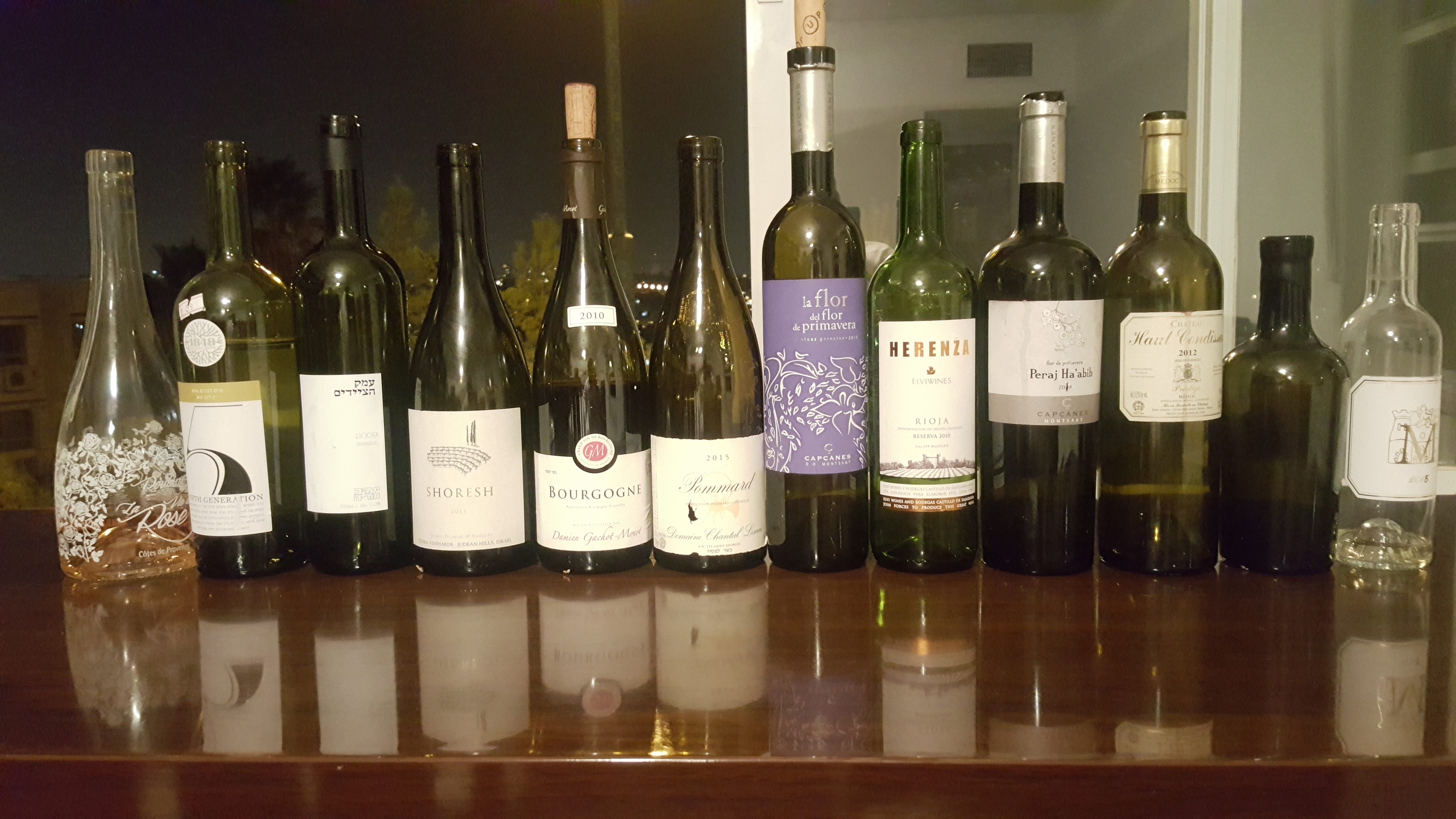
As I have been posting so far, I enjoyed my last trip to Israel and Europe, and I am almost done with my Israeli winery posts. Last we left off, we had just had our second kosher wine tasting at DD’s house, and the first of the three wineries we visited on Friday – Domaine du Castel Winery. However before we get back to the other two wineries we visited on Friday, I wanted to post about the wines we enjoyed over the Shabbat that followed.
I will leave the story for another day, but I can say that Jerusalem was smoking hot Friday and Shabbat (chamsin-like), but thankfully dry. I spat throughout the tastings on Friday, where we went to Tzora Winery, Flam Winery, and the afore-posted Castel Winery. However, some of the group were less careful about spitting and combine that with the searing heat that did not cool till almost midnight – and that made for a viscous 1-2 punch that slowed some folks at the dinner table on Shabbat. However, come Shabbat day all were active and wine was flowing like bonkers. I brought over two wines, as I was asked to drink and forget Israeli wines, please, which is all I could have access to!
However, I was able to find the lovely 2016 La Vie Roubine rose and a total pass of a wine, the 2016 1848 White blend, flat and unimaginative, and the fantastic NV Yaacov Oryah Old musketeer, so I was 2 for 3, which is a very high batting average, but not a good wine present average. Though the NV Yaacov Oryah Old musketeer hopefully makes up for it.
Friday Night
The walk to dinner was preceded by a quick davening in a Sephardic shul that brought back memories of my youth when I spend Shabbosim in Jerusalem. Old and young mingling and davening with their own expressions and intonations, but all still together in spirit and fervor, a real joy. Of course, the other great part is that there was no schlepping of any sort! Gotta love praying in Jerusalem! There was a class by some Rabbi, but I remember none of it, I think that is clear enough.
As we made our way up to our host, the heat was receding a bit, but that is like saying it is easier to walk through torrential rain than a hail storm. It was tough, and it was straight uphill, a small fact that everyone felt free to not disclose to me ahead of time, very nice! To be fair I was not the one schlepping the 8 bottles of wine up that hill, those were strapped to the back of the “not so with us” participant, who courageously powered up the hill, weaving here and fro but upwards all the same! I had to stop once and when we arrived at our host’s home, I was literally blanched and unable to stand – the heat, the hike uphill, it took a toll on me and I must have drunk a gallon of water until I was human again.
Finally, we were ready for kiddush, at least most of us, and that was done on grape juice! Like what! Grape juice! Then I realized – this may be the home of a Frenchman, but it is also home to a few kids who drink grape juice first and then wine. The smallest of the three drinks wine just fine, but the other two enjoy tasting it. The house itself is quite lovely and the fact that it is still standing, notwithstanding the three young terrorists that live within its walls, is a testimony to the building skills of the masons and builders of Jerusalem!
I will skip the food as I was not really tracking what I was eating, not because it was not great, but more because I was greatly enamored by the wines in front of me and the need to sleep ASAP, it had been a long day at that point. Read the rest of this entry
Pinot Noir wines, Kos Yeshous wines, and red and white QPR winners
Well, Yom Tov is now over, and the Jewish Holiday fall season is over. I will keep this very short, I tasted lots of wines and not all of them are themed or per winery, so here they are. Some were really good, like the impressive but not widely available Kos Yeshuos wines from Josh Rynderman, who continues to impress me and whose wines truly belie his youth.
Besides Josh’s fun wines, I tasted the Gachot Manot Pinot Noir wines from the 2010 vintage. Of the four I have now tasted, the only ones I would buy now is the 1er cru if you can find it. The plain Bourgogne is in drink now mode, it has a year left at most in the tank. The other two wines, the Cote de Nuits-Villages and the Gevrey are really not that interesting and are in serious drink up mode.
Sadly, the 2012 Pacifica Pinot Noir dropped off the cliff, it is in serious drink NOW mode, or you will be left with water. There is a new 2016 vintage, I hope to taste it very soon.
Also, bravo to Menahem Israelievitch and the Royal Europe group. They have created two QPR wines that are nice. The best of the bunch by far is the 2016 Chateau Riganes. It is very cheap, at less than 10 dollars on kosherwine.com, and it is mevushal!! Finally! Finally! We are starting to see real wines in the kosher market that are not jacked up. The Chateau Trijet is nice as well, but more fruit forward than I would like.
Finally, I had the chance to taste the 2016 Capcanes Rosat and it did not crack the top roses of 2017, which is a shame. The new 2016 Goose Bay Sauvignon Blanc is a real winner and a QPR winner to boot!
We were in a huge rush so my notes are shorter than usual. The wine notes follow below – the explanation of my “scores” can be found here:
Kos Yeshuos Wines
2016 Kos Yeshuos Grenache, Mokelumne River, Lodi – Score: 90 to 91
The nose is really fun and feminine, with vibrant fruit, juicy strawberry, hints of blueberry, with intensely floral notes showing rose hip and nice sweet baking spices. The mouth on medium bodied is fun, vibrant, and zesty, and with a great backing of good acid that makes it a fun food wine, with good fruit focus showing tart cherry, with a good tannin that carries the wine, with lovely strawberry, and cinnamon at the start that gives way to cloves, allspice, and then great almond pith. The finish is long and spicy, with earth, really fun saline, floral notes, and a backbone of acid that really carries this wine well. Nice! Drink till 2020.
2016 Kos Yeshuos Syrah, Mokelumne River, Lodi – Score: 92
What a lovely Cali nose, a real joy, controlled, fruity, big and bold and really meaty, with really great boysenberry, blueberry, roasted meat, backed by nice floral notes (not weak Australian style – but really rich and floral), with mounds of chocolate, lovely graphite, mineral, and sweet oak. The mouth on this full bodied wine is rich, layered and inky, a real joy, wow, this is a wine that belies Josh’s young career as a winemaker, a wine with great control and finesse, a true food Syrah (not because it is undrinkable without food, it has ZERO date or sweet issues), but this wine is a beast, it cannot be enjoyed on its own, unless u are a glutton for punishment, showing rich cassis, blackberry, followed by blue fruit galore, juicy and ripe, yet not over the top, wrapped in spicy and sweet oak, with rich ribbons of mineral, earth, and great baking spices to bring it all together. The finish is long and mineral based, with great graphite, rich saline, green and black olives, along with hints of other umami to come, but meaty, blue, mineral, and black lingering long. Bravo! Drink from 2018 to 2023. Not available anymore – I think sold out.




